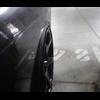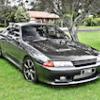rb25 Degreeing cams with hydraulic lifters?
Announcements
-
Similar Content
-
Latest Posts
-
No. You were quite unreasonably cruel. We're not up to speed with whatever beef might exist between you and the other guy who got a warning, but his behaviour 6 years ago and yours now indicate that it might be time to grow up a bit.
-
Hello friends! Just signed up again because my old profile might be dead or too complicated to restore. I am an old user from 2000's back in the hey day. I sold the S15 and fell off the band wagon.. now back again after buying my forever 34. Proud owner of a fresh import R34 GTT. So now the build begins.
-
I’m after a front cross member to suit a R32 GTSt Skyline (I’ve read A31 and C33 are also suitable) Also after a front drivers seatbelt for a R32 Coupe
-
By hardsteppa · Posted
Ahah..i give a friendly community reminder of the forthcoming event and that's the thanks i get 😋 Someone's gone mad with power lol. -
By Dose Pipe Sutututu · Posted
someone being a naughty boy?
-







Recommended Posts
Create an account or sign in to comment
You need to be a member in order to leave a comment
Create an account
Sign up for a new account in our community. It's easy!
Register a new accountSign in
Already have an account? Sign in here.
Sign In Now